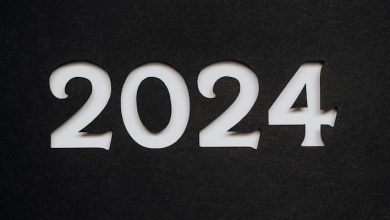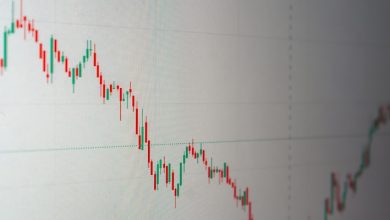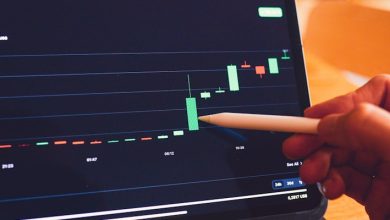Stochastic Oscillators: A Tool for Crypto Traders

- Understanding Stochastic Oscillators in Crypto Trading
- How Stochastic Oscillators Can Help Predict Price Movements
- Using Stochastic Oscillators to Identify Overbought and Oversold Conditions
- The Role of Stochastic Oscillators in Technical Analysis for Cryptocurrency
- Strategies for Incorporating Stochastic Oscillators into Your Trading Routine
- Exploring the Benefits and Limitations of Stochastic Oscillators in Crypto Trading
Understanding Stochastic Oscillators in Crypto Trading
Stochastic oscillators are a valuable tool for crypto traders when it comes to analyzing market trends and making informed trading decisions. These indicators help traders identify overbought or oversold conditions in the market, allowing them to anticipate potential price reversals. By understanding how stochastic oscillators work, traders can gain valuable insights into market momentum and trends.
Stochastic oscillators are based on the idea that as prices rise, closing prices tend to be closer to the upper end of the price range. Conversely, as prices fall, closing prices tend to be closer to the lower end of the price range. This concept is used to calculate two lines on a chart – %K and %D – which help traders identify potential entry and exit points.
%K represents the current price relative to the highest high over a specified period, while %D is a moving average of %K. When %K crosses above %D, it is considered a bullish signal, indicating that the price may continue to rise. On the other hand, when %K crosses below %D, it is seen as a bearish signal, suggesting that the price may decline.
By using stochastic oscillators in their trading strategies, crypto traders can better understand market dynamics and make more informed decisions. These indicators can help traders avoid emotional trading and stick to their trading plans, leading to more consistent and profitable trading results.
How Stochastic Oscillators Can Help Predict Price Movements
Stochastic oscillators are a valuable tool for crypto traders looking to predict price movements in the market. These indicators help traders identify overbought or oversold conditions, allowing them to make more informed trading decisions.
By analyzing the momentum of an asset, stochastic oscillators can provide insights into whether a cryptocurrency is likely to experience a reversal or continue its current trend. This information can be crucial for traders looking to enter or exit positions at the right time.
One way stochastic oscillators can help predict price movements is by generating buy or sell signals based on crossovers. When the %K line crosses above the %D line, it can indicate a buy signal, suggesting that the cryptocurrency is oversold and may be poised for an uptrend. Conversely, when the %K line crosses below the %D line, it can signal a sell opportunity, indicating that the asset is overbought and may be due for a correction.
Additionally, stochastic oscillators can be used to confirm trends identified by other technical indicators. By comparing the oscillator’s readings with price movements, traders can gain a clearer picture of the market dynamics and make more accurate predictions about future price action.
Using Stochastic Oscillators to Identify Overbought and Oversold Conditions
Stochastic oscillators are a popular tool used by crypto traders to identify overbought and oversold conditions in the market. These indicators can help traders determine when an asset may be reaching a point of exhaustion, signaling a potential reversal in price direction.
When using stochastic oscillators, traders look for signals that indicate when an asset is either overbought or oversold. An asset is considered overbought when the stochastic oscillator value is above 80, suggesting that the price may be due for a pullback. On the other hand, an asset is considered oversold when the stochastic oscillator value is below 20, indicating that the price may be ready to bounce back.
By paying close attention to these overbought and oversold conditions, traders can make more informed decisions about when to enter or exit positions in the market. This can help them avoid buying at the top or selling at the bottom, increasing their chances of profiting from their trades.
Overall, stochastic oscillators are a valuable tool for crypto traders looking to navigate the volatile cryptocurrency market. By using these indicators to identify overbought and oversold conditions, traders can improve their trading strategies and make more effective decisions when buying and selling assets.
The Role of Stochastic Oscillators in Technical Analysis for Cryptocurrency
Stochastic oscillators are a popular technical analysis tool used by cryptocurrency traders to identify overbought or oversold conditions in the market. These indicators help traders make informed decisions by providing insight into potential price reversals.
Stochastic oscillators work by comparing a cryptocurrency’s closing price to its price range over a set period, typically 14 days. The oscillator consists of two lines – %K and %D – that fluctuate between 0 and 100. When the %K line crosses above the %D line, it indicates a buy signal, suggesting that the cryptocurrency may be oversold. Conversely, when the %K line crosses below the %D line, it signals a sell opportunity, indicating that the cryptocurrency may be overbought.
Traders can use stochastic oscillators in conjunction with other technical analysis tools to confirm signals and improve the accuracy of their trades. By incorporating stochastic oscillators into their trading strategy, cryptocurrency traders can better navigate the volatile market and capitalize on profitable opportunities.
Strategies for Incorporating Stochastic Oscillators into Your Trading Routine
When it comes to incorporating stochastic oscillators into your trading routine, there are several strategies that can help you make the most of this powerful tool. By following these guidelines, you can enhance your decision-making process and improve your overall trading performance.
- Use stochastic oscillators in conjunction with other technical indicators to confirm signals and reduce false positives.
- Set appropriate time frames for the stochastic oscillator to match your trading style and goals.
- Avoid relying solely on stochastic oscillators for trading decisions, as they are best used as part of a comprehensive trading strategy.
- Consider using divergences between price action and the stochastic oscillator to identify potential trend reversals.
- Regularly review and adjust your stochastic oscillator settings to ensure they are optimized for current market conditions.
By following these strategies, you can effectively incorporate stochastic oscillators into your trading routine and maximize their utility in analyzing cryptocurrency markets. Remember to combine them with other tools and techniques for a well-rounded approach to trading.
Exploring the Benefits and Limitations of Stochastic Oscillators in Crypto Trading
When it comes to crypto trading, stochastic oscillators can be a valuable tool for traders to analyze market trends and make informed trading decisions. By providing traders with insights into overbought and oversold conditions, stochastic oscillators help traders identify potential entry and exit points in the market.
One of the key benefits of using stochastic oscillators in crypto trading is their ability to generate buy and sell signals based on market momentum. By comparing the current price of a cryptocurrency to its price range over a specific period of time, stochastic oscillators can help traders determine whether a cryptocurrency is overbought or oversold.
However, it is important to note that stochastic oscillators also have their limitations in crypto trading. One of the main drawbacks of stochastic oscillators is their tendency to generate false signals during periods of market volatility. This can lead to traders making poor trading decisions based on inaccurate signals from the stochastic oscillator.
Overall, while stochastic oscillators can be a useful tool for crypto traders to analyze market trends and identify entry and exit points, it is important for traders to use them in conjunction with other technical indicators and fundamental analysis to make well-informed trading decisions.



